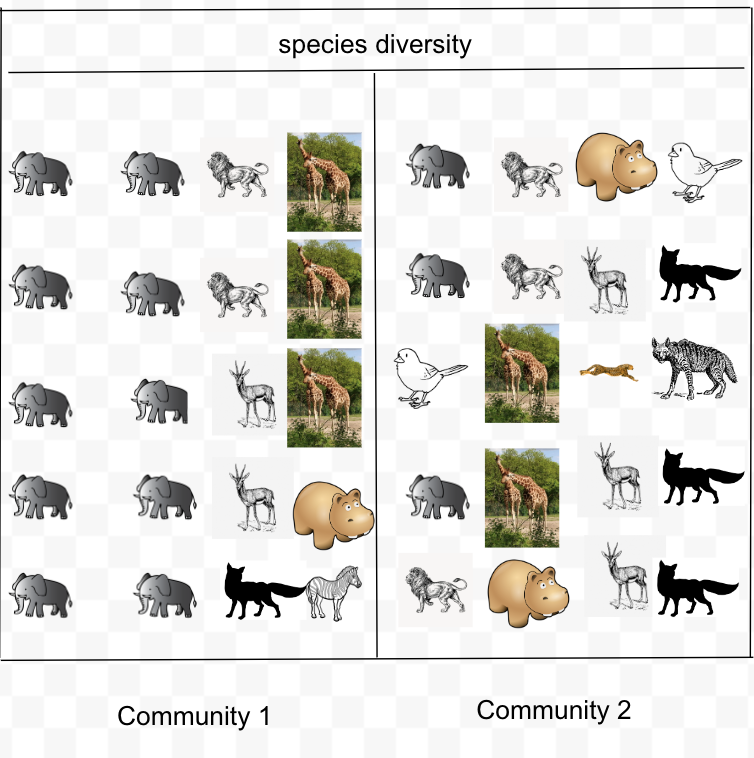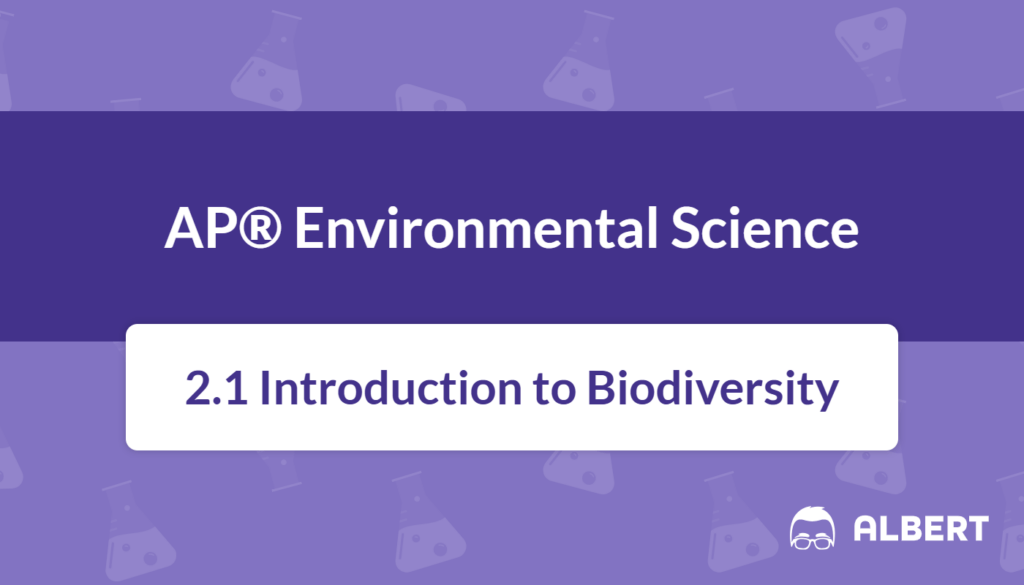What We Review
Introduction to Biodiversity
Biodiversity is a cornerstone of environmental stability. It represents the variety of life found within different ecosystems. Examining ecosystem biodiversity carefully helps in understanding why various species thrive in certain habitats but struggle in others. Moreover, it highlights how ecosystems persist through natural or human-induced disturbances. Consequently, studying biodiversity is essential in AP® Environmental Science because it illustrates how genetic variations, species numbers, and habitat variety contribute to ecosystem resilience.
Below is an in-depth exploration of the levels of ecosystem biodiversity, its importance, and real-world examples. Each section emphasizes practical scenarios so that concepts remain clear and accessible.
What is Biodiversity?
Biodiversity encompasses every living element within an ecosystem, ranging from simple microorganisms to large mammals. Because ecosystems are interconnected, alterations in the abundance or variety of species can affect nutrient cycling, energy flow, and population growth models. Therefore, ecosystem biodiversity underpins the stability of entire ecological networks.
Why Biodiversity Matters
- It ensures ecosystem survival by allowing species to withstand changes in climate or resource availability.
- It provides diverse resources to humans (e.g., medicines, food sources).
- It improves ecosystem functions, such as pollination and water purification.
Illustrative Example: A Forest Ecosystem
- Observe the interactions: Different plant species produce varied seeds that feed birds and small mammals.
- Track the effects: As birds disperse seeds, new plants grow, sustaining herbivores.
- Connect the outcome: The forest maintains balance because each species, whether plant or animal, plays a vital part.
Understanding Levels of Biodiversity
Biodiversity can be divided into three core levels: genetic diversity, species diversity, and habitat diversity. Each level contributes in a unique way to ecosystem resilience. Furthermore, all three levels are interdependent.
Definition of Biodiversity
Biodiversity refers to the broad spectrum of living organisms in a given ecosystem: everything from genes to habitats. Essentially, it focuses on how varied life is on Earth, how organisms interact, and why such variety is crucial.
The Three Levels
- Genetic Diversity
- Genetic diversity addresses the variations in genetic makeup within a single species. A population with high genetic diversity can better cope with diseases and environmental stresses.
- Species Diversity
- Species diversity deals with the number of different species (species richness) and how evenly organisms are distributed. It influences how quickly an ecosystem can rebound from disturbances.
- Habitat Diversity
- Habitat diversity pertains to the range of different environments within an ecosystem. More habitats typically mean more niches for organisms, supporting a wide variety of species.
Example: Coral Reefs
Coral reefs showcase all three levels of biodiversity:
- Genetic Variation: Coral colonies with diverse genes are more likely to withstand temperature changes.
- Species Variety: Fish, crustaceans, and algae provide different ecological services, from grazing on algae to recycling nutrients.
- Multiple Microhabitats: Cavities, reef crests, and lagoon areas allow various species to find suitable living conditions.
The Importance of Genetic Diversity
Genetic diversity is the foundation upon which species adapt to evolving environments and survive unpredictable stressors. Consequently, a population lacking genetic diversity may become vulnerable to diseases or climate shifts.
Role in Population Survival
When a population carries many different genetic traits, it is more likely to thrive, even if a new predator or pathogen arrives. Conversely, limited genetic variation heightens extinction risk.
Population Bottleneck
A population bottleneck occurs when events drastically reduce population size, leaving survivors with fewer unique genes. Over time, even if the total number of individuals recovers, the genetic pool remains narrowed, potentially lowering the ability to adapt to future threats.
Example: The Cheetah Population
Cheetahs experienced a historic bottleneck that reduced their gene pool significantly:
- Identify the stressor: The species nearly went extinct in prehistory.
- Observe the reduction: Survivor cheetahs shared similar genes afterward.
- Notice limited diversity: Cheetahs often display genetic weaknesses, such as susceptibility to diseases.
- Evaluate outcome: Even if population figures rise, the limited genetic base constrains future adaptation.
For a simple population growth illustration, the logistic growth model can show recovery in number but not necessarily in genetic variation:
N_{t+1} = N_t + rN_t\left(1 - \frac{N_t}{K}\right)In this formula:
- N_{t} = population size at time t
- r = growth rate
- K = carrying capacity
After a bottleneck, the population may grow again, but the new gene pool remains limited.
Species Diversity in Ecosystems
Species diversity is vital for ecological resilience. An ecosystem with numerous species can often cushion itself against disruptions such as fires or storms. This is because multiple species can fulfill similar roles, ensuring essential processes—like pollination and nutrient cycling—continue.

Species Resource Partitioning
Different species often use resources in distinct ways. This arrangement minimizes direct competition and promotes coexistence.
Species Richness and Ecosystem Stability
Species richness refers to the number of different species in a region. Generally, more species means a broader range of ecological roles, such as decomposers, herbivores, and predators. Therefore, ecosystems with higher species richness are better equipped to recover from sudden environmental changes.
Example: Tropical Rainforests
In a tropical rainforest:
- High species richness: Thousands of plant and animal species coexist.
- Resource diversification: Some birds feed on seeds high in the canopy, while others forage near the forest floor.
- Stability: If one species of insect declines, another may fill the same functional role, keeping nutrient cycles intact.
Habitat Diversity and Its Effects
Habitat diversity relates to the variety of physical environments available within an ecosystem. Different habitats support diverse communities of organisms. Nevertheless, many species are specifically adapted to particular habitat conditions, making changes or destruction of those habitats a serious threat.
Relationship Between Habitat Loss and Species Diversity
Habitat destruction often reduces the number of habitat specialist species. Specialist species rely on narrow ecological conditions (e.g., specific food sources) and may vanish if those conditions disappear. Subsequently, generalist species, which are more flexible, may still survive, although overall biodiversity typically declines.
Territorial Requirements
Some species need extensive habitats or migration corridors, such as large carnivores or migratory birds. When habitats fragment, these species struggle to maintain viable populations.
Example: Impact of Deforestation on Bird Species
- Identify the change: Large swaths of forest are cut down.
- Observe specialist vulnerabilities: Birds requiring old-growth forests lose nesting sites.
- Record the broader decline: Generalist birds may persist, but overall bird diversity plummets.
- Conclude the effect: Reduced habitat diversity negatively impacts multiple levels of biodiversity.
The Interconnectedness of Biodiversity
No single level of biodiversity acts alone. In fact, genetic, species, and habitat diversity weave together to form a robust tapestry. When one thread weakens, the stability of the entire ecosystem can be affected.
Interdependence Among Levels
- Genetic diversity underpins how well individual species can cope with environmental shifts.
- Species diversity ensures multiple organisms can fill essential ecological roles.
- Habitat diversity provides unique living spaces, encouraging a fuller range of life forms.
Ecosystem Recovery
High biodiversity supports faster recovery from fires, hurricanes, or human disturbances. Even if some species die out temporarily, others may persist, eventually replenishing the ecosystem.
Example: Post-Wildfire Regeneration
After a wildfire in a biodiverse grassland:
- Species inventory: Many plant species can resprout or bloom.
- Seed bank advantage: Seeds stored in the soil remain viable.
- Animal reintroduction: Surviving insects and birds help pollinate and spread seeds.
- Long-term rebound: The ecosystem gradually regains its previous structure because overlapping functional roles exist across multiple species.
Conclusion
Biodiversity, defined at genetic, species, and habitat levels, remains indispensable for healthy ecosystems. Genetic diversity undergirds a population’s capacity to adapt, any loss of habitat typically lowers specialist species first, and overall species diversity improves an ecosystem’s ability to bounce back from disruptions. Thus, maintaining ecosystem biodiversity strengthens ecosystem services—from pollination to carbon sequestration—and ensures greater environmental resilience.
Ultimately, conservation efforts and responsible resource management keep biodiversity intact. Researchers, policy makers, and communities can collaborate to preserve habitats, safeguard genetic variation, and protect the many species integral to well-functioning ecosystems. By recognizing each layer of biodiversity, it becomes easier to appreciate that the loss of one affects the stability of others.
Important Vocabulary
- Biodiversity: The variety of all living organisms on Earth, encompassing genes, species, and habitats.
- Genetic Diversity: The range of genetic traits within a population or species, essential for adaptation to changing conditions.
- Species Diversity: The abundance of different species in an ecosystem, influencing resilience and resource use.
- Habitat Diversity: The variety of distinct areas—such as forests, coral reefs, or wetlands—within an environment, supporting diverse species.
- Population Bottleneck: A drastic reduction in population size leading to reduced genetic variation in future generations.
- Specialist Species: Organisms with narrow habitat or dietary requirements, making them more vulnerable to environmental changes.
- Generalist Species: Organisms with broad diet or habitat flexibility, allowing them to adapt more easily to changing conditions.
- Species Richness: The total number of distinct species present in an ecosystem.
These resources offer insights to deepen understanding of biodiversity and its critical role in sustaining ecological balance. Engaging with them can reinforce key concepts from this article while preparing for more advanced lessons on environmental stewardship.
Sharpen Your Skills for AP® Environmental Science
Are you preparing for the AP® Environmental Science test? We’ve got you covered! Try our review articles designed to help you confidently tackle real-world AP® Environmental Science problems. You’ll find everything you need to succeed, from quick tips to detailed strategies. Start exploring now!
- AP® Environmental Science: 1.8 Review
- AP® Environmental Science: 1.9 Review
- AP® Environmental Science: 1.10 Review
- AP® Environmental Science: 1.11 Review
Need help preparing for your AP® Environmental Science exam?
Albert has hundreds of AP® Environmental Science practice questions, free response, and full-length practice tests to try out.








